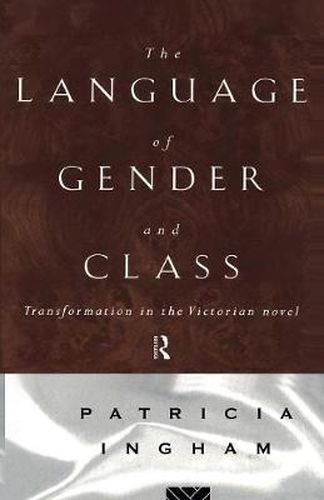Readings Newsletter
Become a Readings Member to make your shopping experience even easier.
Sign in or sign up for free!
You’re not far away from qualifying for FREE standard shipping within Australia
You’ve qualified for FREE standard shipping within Australia
The cart is loading…






In this lucid and cogently argued work, Patricia Ingham examines in detail the widely accepted critical cliche: Examining the representation of gender always involves investigating the representation of class . Using historical material about class’, she re-examines six major Victorian novels. Focusing on language, she explores how stereotypes of gender and class encode cultural myths that reinforce the social status quo. However, The Language of Gender and Class demonstrates that none of the novelists, either male or female, completely accepts either the stereotyped figures or the authorized story. The figures of the Angel and the Whore are reassessed and modified in Ingham’s in-depth reading of the novels. The result is that the treatment of gender is by the 1890s released from its task of containing neutralising class conflict. New accounts of femininity can begin to emerge. This highly original and unprecedented work will provoke debate and encourage students and scholars in literary, linguistic and gender studies to rethink their views on the Victorian novel.
$9.00 standard shipping within Australia
FREE standard shipping within Australia for orders over $100.00
Express & International shipping calculated at checkout
In this lucid and cogently argued work, Patricia Ingham examines in detail the widely accepted critical cliche: Examining the representation of gender always involves investigating the representation of class . Using historical material about class’, she re-examines six major Victorian novels. Focusing on language, she explores how stereotypes of gender and class encode cultural myths that reinforce the social status quo. However, The Language of Gender and Class demonstrates that none of the novelists, either male or female, completely accepts either the stereotyped figures or the authorized story. The figures of the Angel and the Whore are reassessed and modified in Ingham’s in-depth reading of the novels. The result is that the treatment of gender is by the 1890s released from its task of containing neutralising class conflict. New accounts of femininity can begin to emerge. This highly original and unprecedented work will provoke debate and encourage students and scholars in literary, linguistic and gender studies to rethink their views on the Victorian novel.